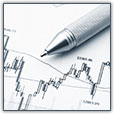View by year
2015

Effects of the Ability to Repay and Qualified Mortgage Rules on the Mortgage Market
In this note, we use recently released loan level data collected under the Home Mortgage Disclosure Act (HMDA) to examine how the new ability-to-repay (ATR) rules may have affected mortgage lending activity in 2014.
DOI: https://doi.org/10.17016/2380-7172.1680

Dynamics of Overnight Money Markets: What Has Changed at the Zero Lower Bound?
In this note we provide a comparative analysis of overnight money market dynamics before the crisis and after the target federal funds rate (FFR) has been lowered to the zero lower bound (ZLB).
DOI: https://doi.org/10.17016/2380-7172.1676

Introducing Section 529 Plans into the U.S. Financial Accounts and Enhanced Financial Accounts
Section 529 plans are tax-qualified college saving or prepaid tuition programs generally offered and administered by the states. Created as tax-advantaged savings vehicles, they were designed to encourage families to save for future college education expenses.
DOI: https://doi.org/10.17016/2380-7172.1673

The Ins and Outs of Mortgage Debt: An Update
Real household mortgage debt has been flat over the past two years. However, as described in more detail below, new data on credit flows reveal that mortgage inflows have picked up for the first time since before the financial crisis, including to individuals with lower credit scores.
DOI: https://doi.org/10.17016/2380-7172.1669

Credit-to-GDP Trends and Gaps by Lender- and Credit-type
The one-sided credit-to-GDP gap -- measured as the difference between the level of private nonfinancial sector credit-to-GDP and its one-sided Hodrick-Prescott (HP) filtered trend (with λ=400,000) -- is a prominent variable in the decision-making framework proposed by the BCBS for the Basel III countercyclical capital buffer (CCyB).
DOI: https://doi.org/10.17016/2380-7172.1653

Financial Well-Being of Individuals Living in Areas with Concentrated Poverty
Much of the attention to income inequality and poverty is focused on individual level circumstances. However, researchers have also observed that living in an area of concentrated poverty may result in additional disadvantages to individuals beyond that which results from their own individual poverty status.
DOI: https://doi.org/10.17016/2380-7172.1636

Low Inflation in the United States: A Summary of Recent Research
Inflation in the United States has been running at low levels. Over the five years ending in December 2014, the percent change in the Consumer Price Index (CPI), at 8.8 percent (or 1.7 percent at an annual rate), was the lowest rate of price increase seen in the United States in half a century.
DOI: https://doi.org/10.17016/2380-7172.1665

A Trillion Dollar Question: What Predicts Student Loan Delinquency Risk?
Over the past ten years, the real amount of student debt owed by American households more than doubled, from about $450 billion to more than $1.1 trillion. As a result of this increase, in 2010 student loan debt surpassed credit card debt as the largest class of non-housing consumer debt.
DOI: https://doi.org/10.17016/2380-7172.1647

Should you trust things you hear online? Comparing SHED and Census Bureau survey results
In the fall of 2013, the Federal Reserve Board began conducting the Survey of Household Economics and Decisionmaking (SHED), which is an annual survey of individual consumers designed to monitor their well-being and identify risks to their financial stability.
DOI: https://doi.org/10.17016/2380-7172.1619

U.S. Net Wealth in the Financial Accounts of the United States
This note describes the measurement of U.S. net wealth in the Federal Reserve's Financial Accounts of the United States.
DOI: https://doi.org/10.17016/2380-7172.1642

Federal Debt in the Financial Accounts of the United States
This note explains the concept of federal debt in the Financial Accounts of the United States, how it has recently changed, and how it differs from other commonly cited measures of federal debt. As described below, a key factor is the treatment of intragovernmental holdings of U.S. debt securities.
DOI: https://doi.org/10.17016/2380-7172.1641

Will Household Expectations Follow Professional Forecasters'?
In January 2012 the FOMC announced an explicit 2 percent objective for inflation as measured by the price index for Personal Consumption Expenditures (PCE).
DOI: https://doi.org/10.17016/2380-7172.1622

Why Are Net Interest Margins of Large Banks So Compressed?
This note analyzes recent trends in net interest margins (NIMs) at domestic bank holding companies.
DOI: https://doi.org/10.17016/2380-7172.1612

Why Boomerang? Debt, Access to Credit, and Parental Co-residence among Young Adults
A persistent media narrative from the Great Recession is the phenomenon of "boomerang" kids, that is, the rapid increase of young adults moving back in with their baby boomer parents. From a life-cycle perspective, boomerang kids may be delaying wealth-building, and they may be a strain on parental resources. From a macroeconomic perspective, increased rates of parental co-residence have important implications for the economy at large.
DOI: https://doi.org/10.17016/2380-7172.1621

Credit Scores, Trust, and Stock Market Participation
Investments in stocks earn a substantially higher return than investment in safer assets in the long run, even after adjusting for risks in the stock market. However, not all households own stocks (Mankiw and Zeldes, 1991), and the share of U.S. households that invest in stocks has been much lower than the standard theory predicts--a phenomenon often referred to as the "participation puzzle."
DOI: https://doi.org/10.17016/2380-7172.1588

Hanging on every word: Semantic analysis of the FOMC's postmeeting statement
The Federal Open Market Committee's (FOMC or "Committee") postmeeting statements constitute one of the key vehicles through which the Committee communicates its assessment of the economy, its policy actions, and its thinking about future policy.
DOI: https://doi.org/10.17016/2380-7172.1580

Recent Trends in Communications Equipment Prices
In a recently published working paper, Prices for Communications Equipment: Rewriting the Record, the authors of this note provide new estimates of prices for communications equipment for the period 1963 to 2009. In this note we extend those results through 2014 and comment briefly on the implications for high-tech innovation, production, and investment.
DOI: https://doi.org/10.17016/2380-7172.0067

The Effects of FOMC Communications before Policy Tightening in 1994 and 2004
The ways in which the Federal Open Market Committee (FOMC or "Committee") communicates its views on economic and financial conditions, the economic outlook, and its policy intentions have evolved over time.
DOI: https://doi.org/10.17016/2380-7172.1559

The Runnables
Runs are an inherent vulnerability of the markets for short-term funding. Financial crises since the advent of banking have often exhibited systemic bank runs. The resulting disruptions to financial markets generally have had significant adverse impacts on the real economy.
DOI: https://doi.org/10.17016/2380-7172.1595

Off-Balance Sheet Items of Depository Institutions in the Enhanced Financial Accounts
The Enhanced Financial Accounts initiative is an ambitious, long-term effort to augment the Financial Accounts of the United States with a more detailed picture of financial intermediation in the United States. This Note describes one initial project to provide more detailed information on the holdings and activities of depository institutions.
DOI: https://doi.org/10.17016/2380-7172.1579

Launching the Enhanced Financial Accounts
The Federal Reserve Board has begun an ambitious and long-term effort to enhance the Financial Accounts of the United States by providing additional detail and disaggregation, higher frequency data, and additional documentation and analysis of financial data, in order to improve our picture of financial intermediation and activity in the United States.
DOI: https://doi.org/10.17016/2380-7172.1593

Credibility of Optimal Forward Guidance at the Interest Rate Lower Bound
Market participants and other analysts generally expect that the federal funds rate will rise from its effective lower bound (ELB) later this year. However, the ELB could again become a binding constraint on monetary policy in the future.
DOI: https://doi.org/10.17016/2380-7172.1577
Mass Population Displacement and Retail Activities in the Wake of Hurricane Katrina
This week marks the 10th anniversary of Hurricane Katrina's tragic landfall near New Orleans, Louisiana, and the forced relocation of hundreds of thousands of families who lost their homes in the disaster. This mass population displacement boosted, for an extended period, population density and store frequentation in areas that were relatively spared by the storm. This note argues that supermarkets that weathered the hurricane raised prices little despite facing markedly higher store traffic and likely disruptions to their supply chains.
DOI: https://doi.org/10.17016/2380-7172.1600

How Much Student Debt is Out There?
As is widely known, student loan debt has expanded significantly over the past decade or so and stands at historically high levels. But how much in total do students owe?
DOI: https://doi.org/10.17016/2380-7172.1576

Mapping Heat in the U.S. Financial System: A Summary
This Note reports a selection of results from research intended to quantitatively measure the buildup and reduction of vulnerabilities in the U.S. financial system over time.
DOI: https://doi.org/10.17016/2380-7172.1574

Taxonomy of Studies on Interconnectedness
This note provides a taxonomy of existing studies in the literature on interconnectedness, focusing specifically on empirical measures.
DOI: https://doi.org/10.17016/2380-7172.1569

Does it matter who your parents are? Findings on economic mobility from the Survey of Household Economics and Decisionmaking
Coming out of the Great Recession, there are renewed concerns about the level of economic opportunity throughout the income distribution and the extent to which economic advancement is a realistic goal for all American families.
DOI: https://doi.org/10.17016/2380-7172.1567

Prices for Data Storage Equipment and the State of IT Innovation
This note presents new estimates of price trends for data storage equipment, a key general-purpose technology that enables both emerging and mature IT applications.
DOI: https://doi.org/10.17016/2380-7172.0056

The Effects of Liquidity Regulation on Participation in the Term Deposit Facility
We find that banks subject to the Liquidity Coverage Ratio (LCR) submit tenders relatively more often than banks not subject to it in operations that allow banks to withdraw funds prior to the maturity date.
DOI: https://doi.org/10.17016/2380-7172.1545

Did the Fed's Announcement of an Inflation Objective Influence Expectations?
Economic theory suggests that inflation expectations are a key determinant of actual inflation.
DOI: https://doi.org/10.17016/2380-7172.1550

The Labor Share of Income and Equilibrium Unemployment
After rising to 10 percent in the wake of the Great Recession, the unemployment rate is now approaching a level that many observers--including the Congressional Budget Office, as shown in Figure 1--associate with the natural rate of unemployment.
DOI: https://doi.org/10.17016/2380-7172.1553

The Increase in Wealth Concentration, 1989-2013
Wealth is highly concentrated in the United States, and top shares have been rising in recent decades, raising both normative and macroeconomic policy concerns.
DOI: https://doi.org/10.17016/2380-7172.1535

Domestic Electronics Manufacturing: Medical, Military, and Aerospace Equipment and What We Don't Know about High-Tech Productivity
Beginning in the 1990s, Federal Reserve Board staff paid increasing attention to electronics manufacturing in order to advance its understanding of technological innovation, of the role of the domestic industrial sector in global value chains, and of the sources of labor productivity growth.
DOI: https://doi.org/10.17016/2380-7172.1548

Who Drives Luxury Cars (Only for a While)?
Household consumption of luxury goods has attracted increasing attention in various areas of finance and economics research.
DOI: https://doi.org/10.17016/2380-7172.1536

The FOMC meeting minutes: An assessment of counting words and the diversity of views
The Federal Reserve's communications with the public have evolved substantially since the early 1990s.
DOI: https://doi.org/10.17016/2380-7172.2048

Assessing the Community Reinvestment Act's Role in the Financial Crisis
An important question arising out of the financial crisis is whether the Community Reinvestment Act (CRA) played a significant role in the subprime mortgage boom and bust by pushing banks to make loans to risky borrowers.
DOI: https://doi.org/10.17016/2380-7172.1530

Residual Seasonality in GDP
With a second year in a row of unusually weak first-quarter growth, some analysts have argued that there may be residual seasonality in the GDP data, that is, a predictable seasonal pattern remains in the published data.
DOI: https://doi.org/10.17016/2380-7172.1538

Forecasts of Economic Activity in the Great Recession
Forecasts by the Board staff for economic activity during the Great Recession proved to be overly optimistic on some dimensions, such as GDP, and yet were appropriately pessimistic on other dimensions, such as the GDP gap (the deviation of GDP from potential output).
DOI: https://doi.org/10.17016/2380-7172.1518

Defined-Contribution Pension Plans for State and Local Government Employees in the Financial Accounts of the United States
This note provides some background information on the DC pension plans available to state and local (S&L) government workers, briefly discusses the methodology used to construct the estimates of assets held by S&L DC pension plans, and presents the estimates currently reported in the Financial Accounts.
DOI: https://doi.org/10.17016/2380-7172.1519

Deleveraging and Recent Trends in Household Debt
After falling for almost five years, household debt (measured in dollars) has risen in each of the last seven quarters, as the primary forces exerting downward pressure on household debt in previous years (mortgage charge-offs and negative net mortgage originations) have waned, while consumer credit has been expanding at a robust pace.
DOI: https://doi.org/10.17016/2380-7172.1516

The recent slowdown in high-tech equipment price declines and some implications for business investment and labor productivity
Investment in high-tech equipment spurred by rapidly falling prices has accounted for an important share of business investment and labor productivity growth since the 1970s.
DOI: https://doi.org/10.17016/2380-7172.1512

The Federal Reserve's Overnight and Term Reverse Repurchase Agreement Operations in the Financial Accounts of the United States
This note explains how the Federal Reserve's overnight and term reverse repurchase agreement (RRP) operations are reported in the Federal Reserve's Financial Accounts of the United States (formerly known as the Flow of Funds Accounts).
DOI: https://doi.org/10.17016/2380-7172.1510

Do Lower Gasoline Prices Boost Confidence?
A gallon of gasoline currently costs one third less than it did last summer.
DOI: https://doi.org/10.17016/2380-7172.1501

Where Are The Construction Workers?
The labor market for construction workers suffered a massive shock in the wake of the housing bust, as demand for new homes dried up and firms rapidly shed workers.
DOI: https://doi.org/10.17016/2380-7172.1499

The Effects of Forward Guidance in Three Macro Models
With the federal funds rate at its effective zero lower bound since the end of 2008, much attention has been focused on estimating the effects of "unconventional" monetary policy actions, such as large-scale asset purchases or explicit forward guidance concerning the future path of the funds rate.
DOI: https://doi.org/10.17016/2380-7172.1488

How Does Student Loan Debt Affect Light Vehicle Purchases?
Light vehicle sales plummeted during the recent financial crisis and the ensuing recession.
DOI: https://doi.org/10.17016/2380-7172.1482

Relation between Levels and Changes in Lending Standards Reported by Banks in the Senior Loan Officer Opinion Survey on Bank Lending Practices
This note uses bank-level answers to the Senior Loan Officer Opinion Survey on Bank Lending Practices (SLOOS) to investigate the relation between levels and changes in lending standards reported by banks. We provide evidence that banks' responses about levels and changes in standards are positively correlated, although this relationship is not clear in summary statistics. These results suggest that banks’ responses to the quarterly SLOOS questions and their annual counterparts contain independent information about their lending practices.
DOI: https://doi.org/10.17016/2380-7172.1478
Disclaimer: FEDS Notes are articles in which Board staff offer their own views and present analysis on a range of topics in economics and finance. These articles are shorter and less technically oriented than FEDS Working Papers and IFDP papers.